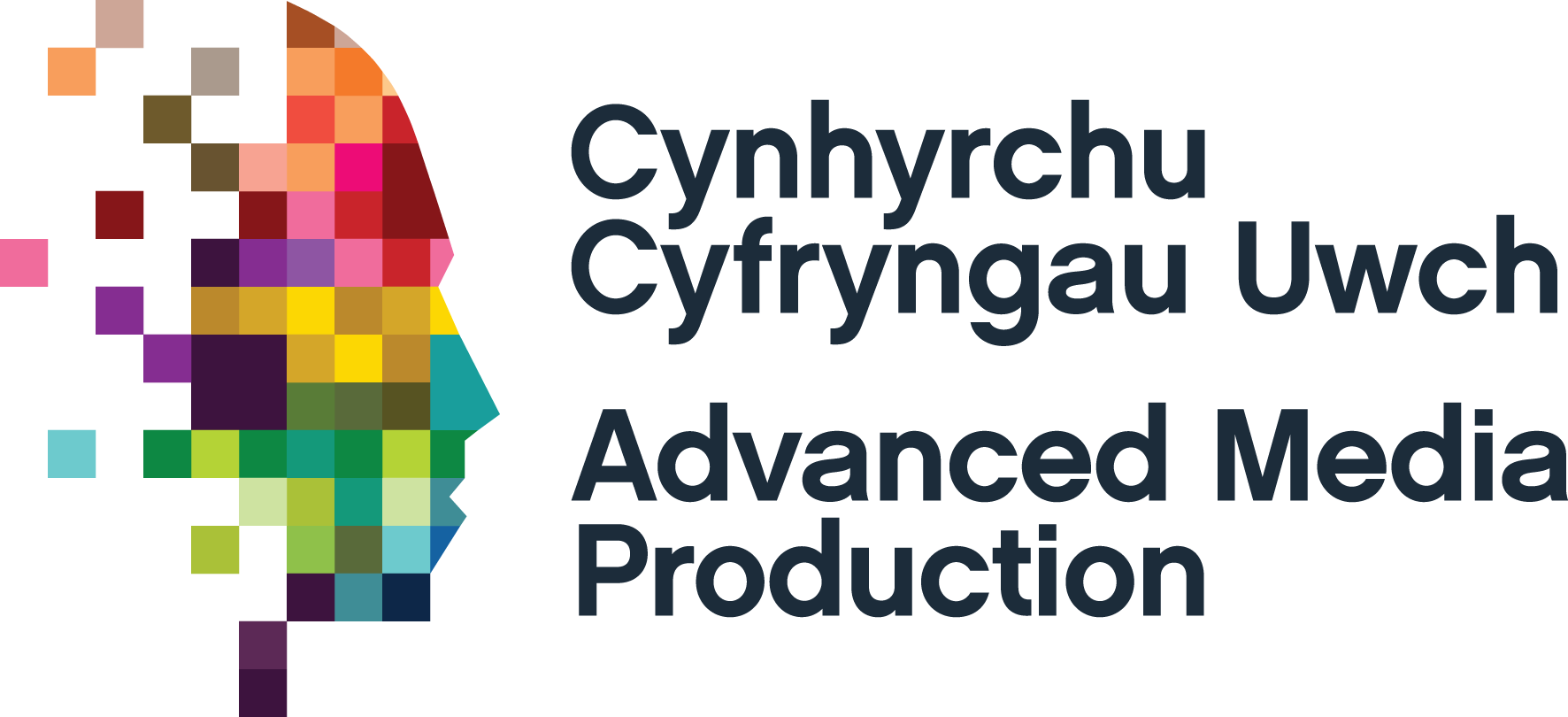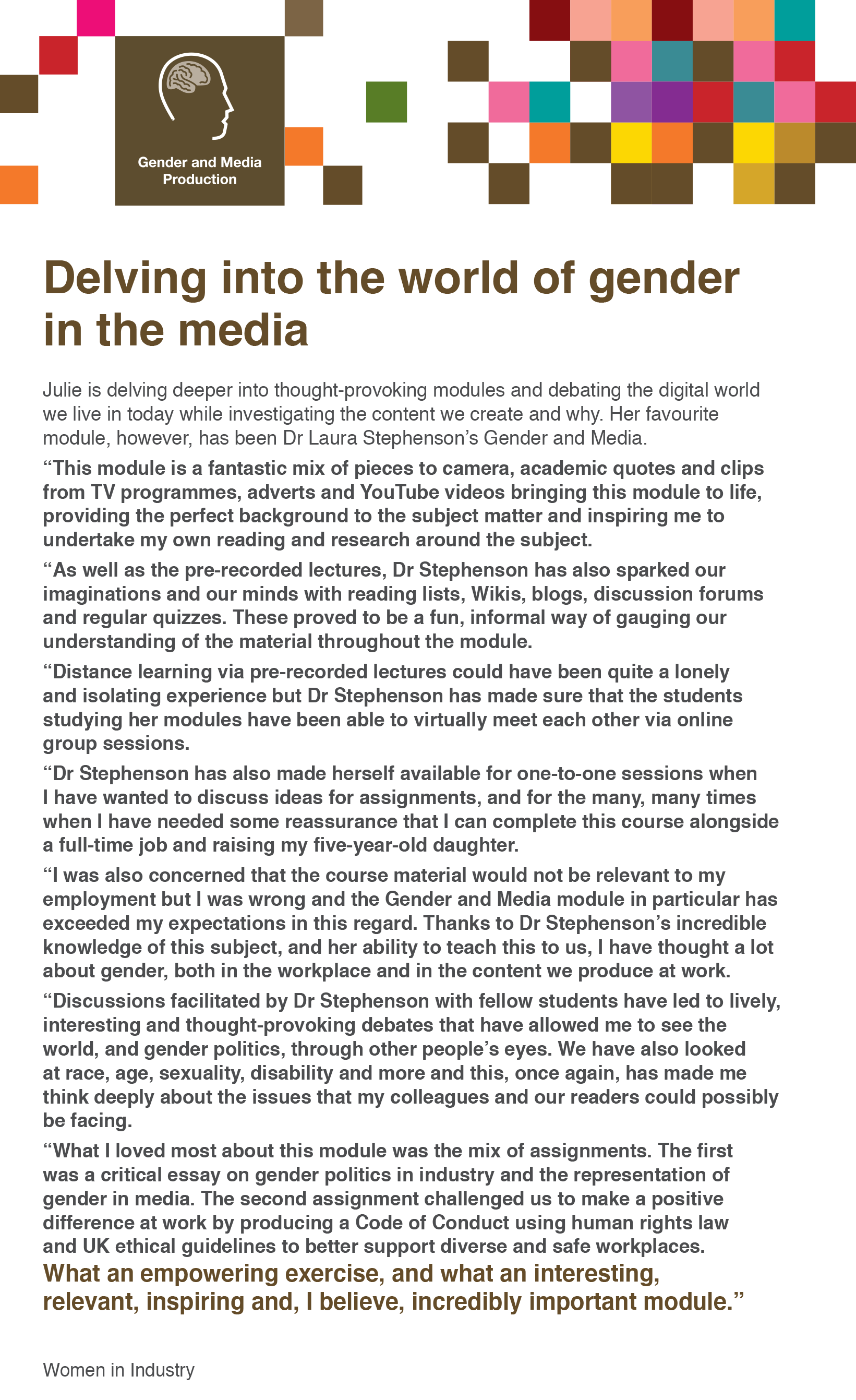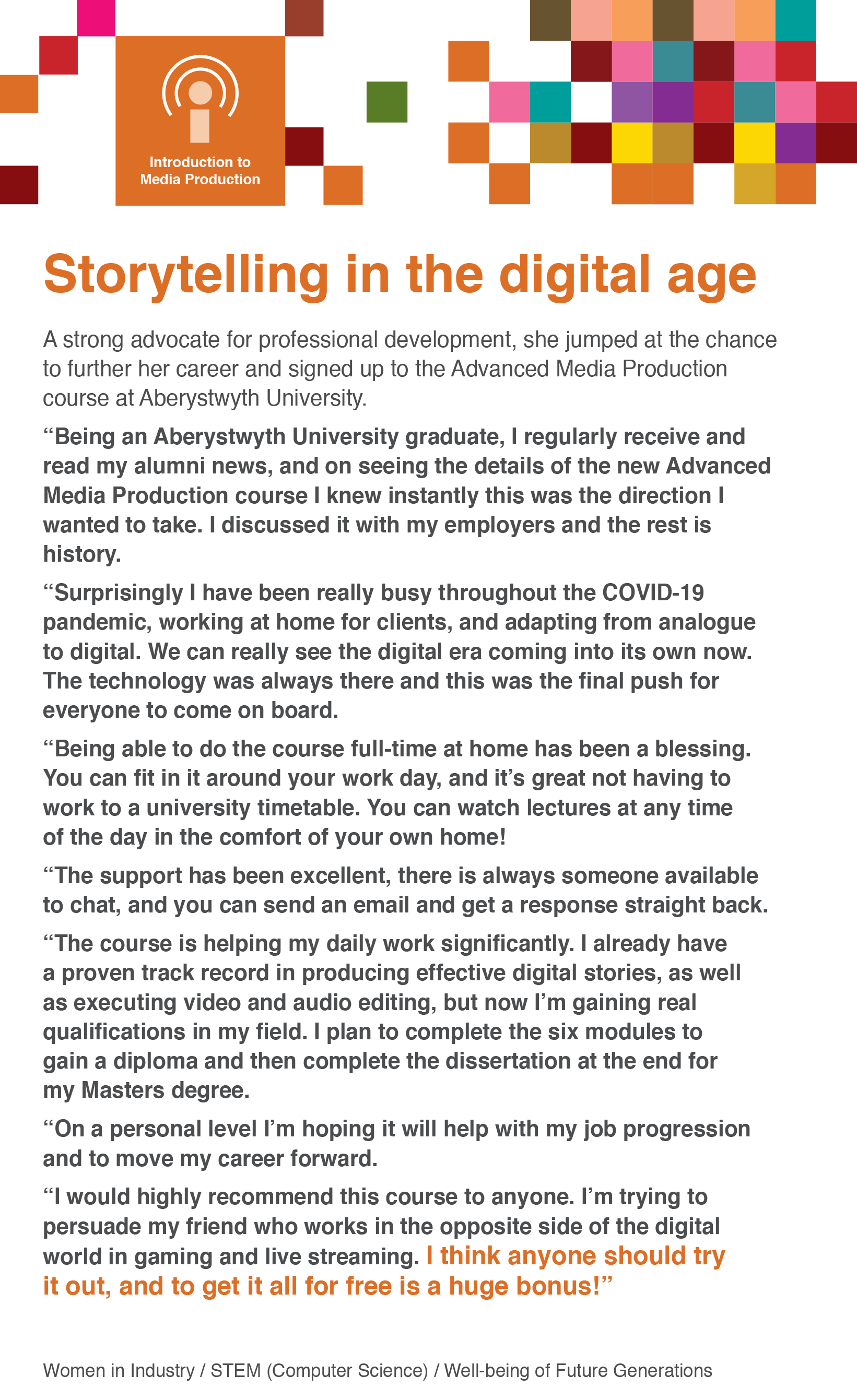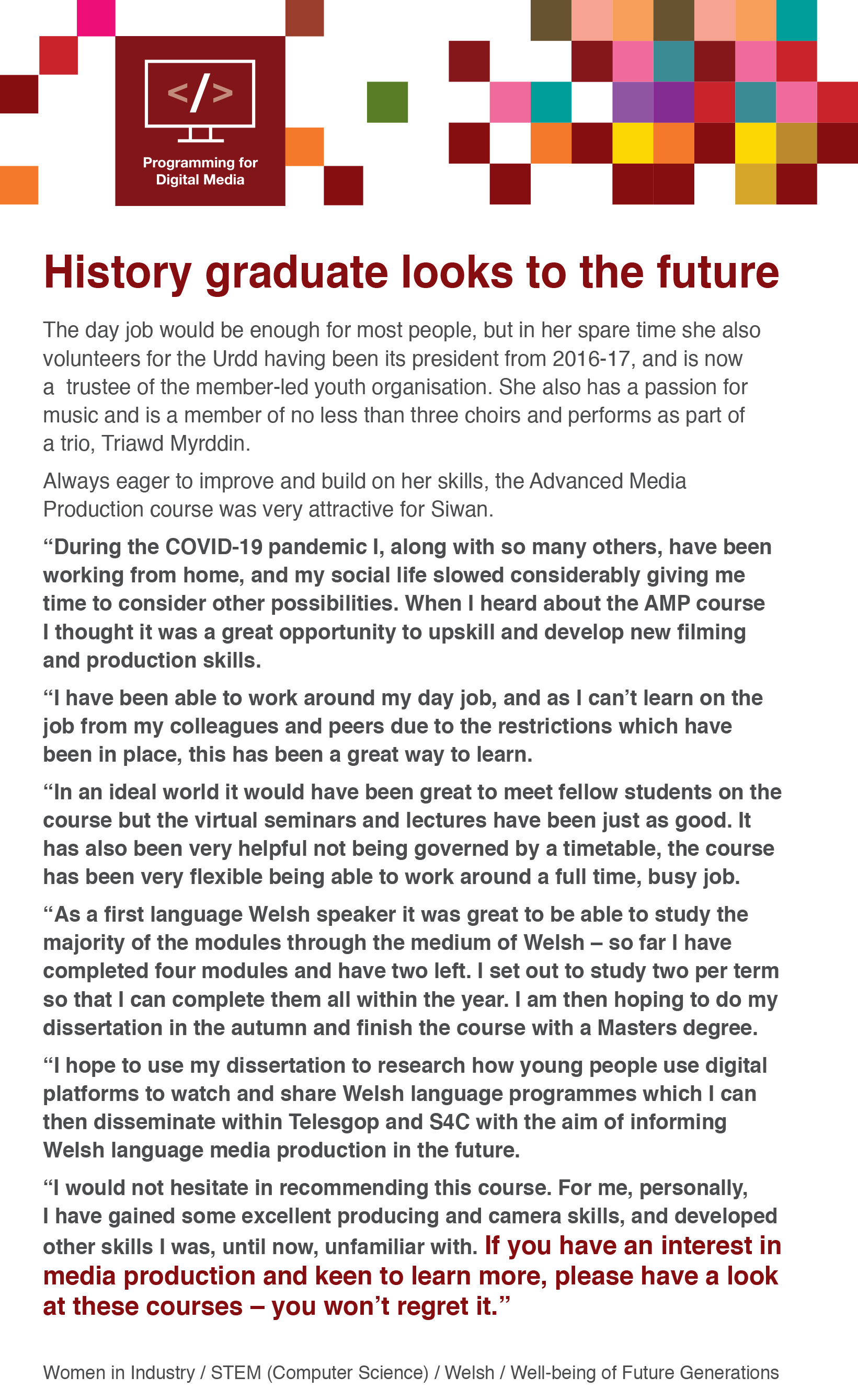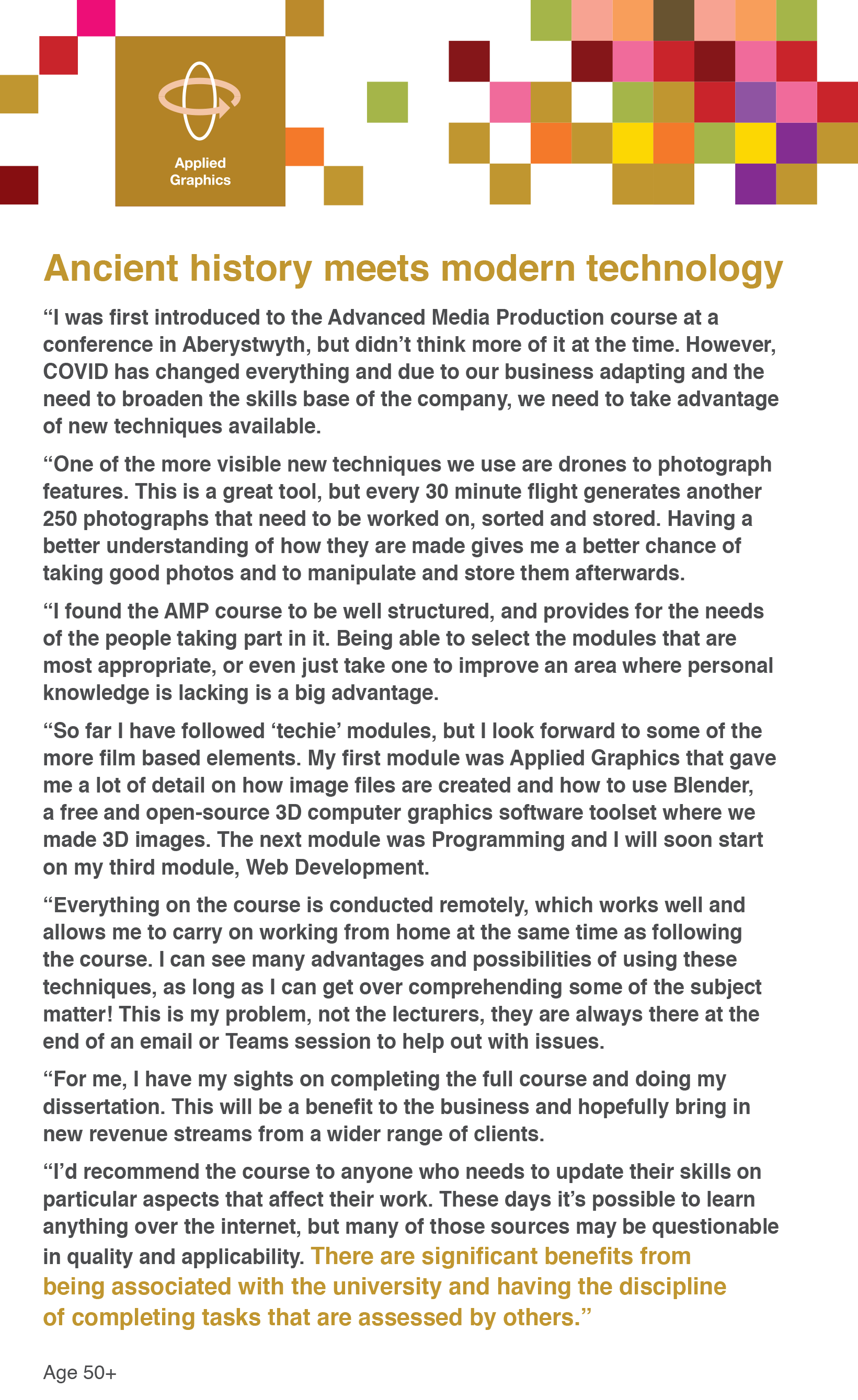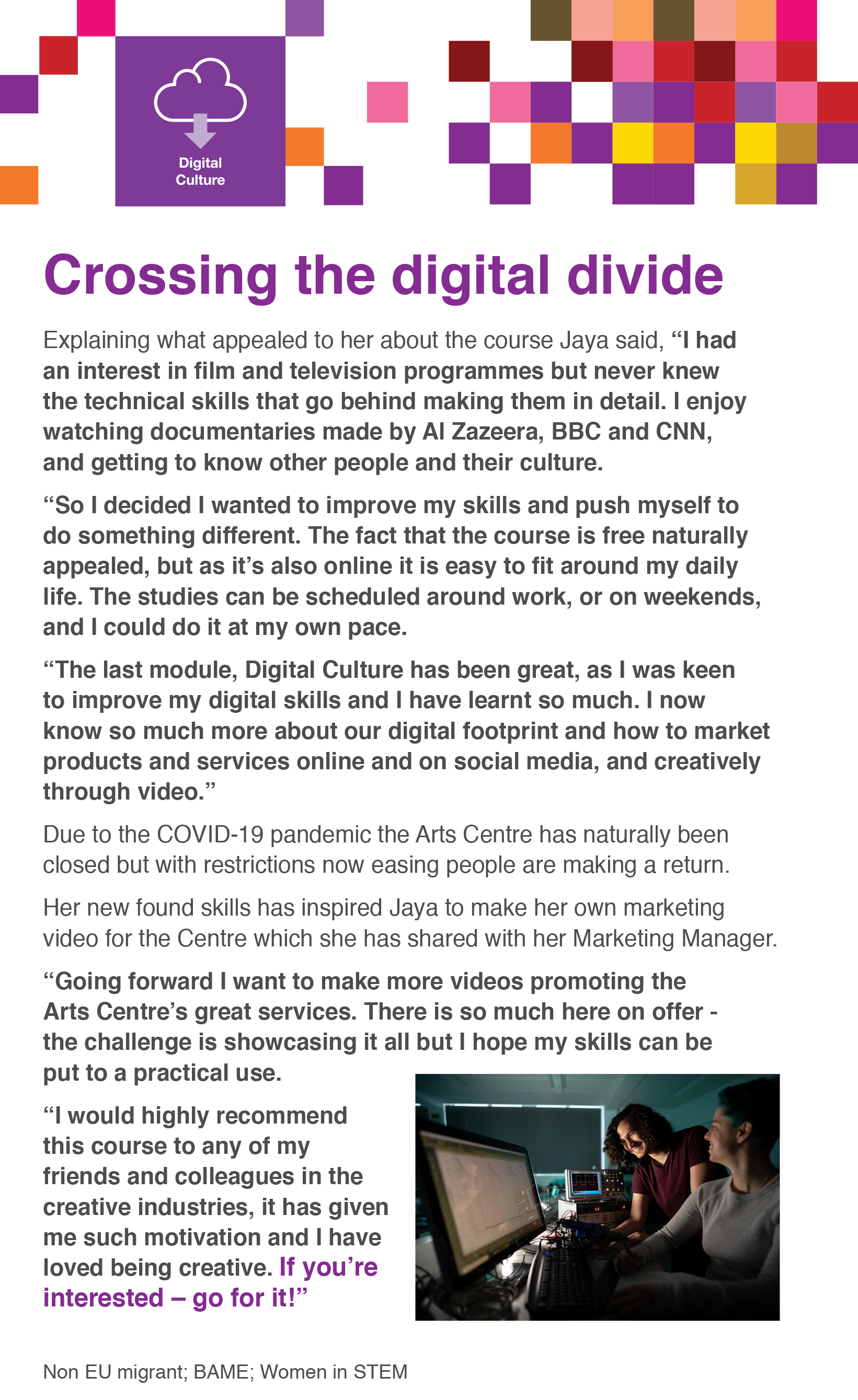Home / Study with us / Modules & Timetable / Extended Reality
Extended Reality (XR)

Extended Reality (XR) which comprises of Virtual Reality (VR), Augmented Reality (AR) and Mixed Reality (MR) are exciting and relatively new technologies that will allow novel methods of interacting with a wide variety of Creative Industries datasets. This module introduces you to the underlying technologies that enable XR. It focusses on how they are used and what the future holds with emphasis on digital media. An introduction to XR using a broadly chronological approach will be presented focussing on how all the underlying technologies came together at key moments in the history of XR. As you learn about the technology, you’ll also develop hands on experience in the field ending the course with a thorough and peer reviewed XR Product Brief that you could use as the basis for future development.
Learning objectives
On successfully completing this module, you should be able to:
- Have an understanding of the underlying technologies that enable XR.
- Know how the underlying XR technologies are used and what their future holds, you’ll be well- equipped to deal with XR as it rapidly evolves and converges.
- Use Unity XR API to build and run simple XR applications on your own smartphone.
- Define, visualise and iterate your own original concept for an XR application.
Content
The module will make use of recorded lectures, guided reading and practical work with workshops. We will cover the following areas:
List of units
| Block 1 – How the underlying technologies that enabled XR came together |
|---|
| 1. VR for everyone: How Google Cardboard democratised VR. |
| 2. VR Explosion: From Google Cardboard to Google Earth VR and How Pokemon GO went everywhere. |
| 3. What does the future of XR look like? |
| Block 2 – Building and running simple XR applications using Unity XR API |
|---|
| 4. Getting started with XR. |
| 5. Bringing AR to your web browser. |
| 6. Creating VR experiences and visualising in Google Cardboard or Daydream. |
| 7. Controlling the Virtual environment. |
| Block 3 – Developing your own original concept for an XR application |
|---|
| 8. Definition, visualisation of an XR application. |
| 9. Iteration of an XR application. |
| 10. Creating a thorough and peer reviewed XR Product Brief. |
Lecturers: Dr Jonathan Bell, Dr Edore Akpokodje
